Tag Archives: ai
Cash Forecasting Models & Treasury Management

As a business owner, you are constantly working to ensure that your company has the cash it needs to operate. Cash forecasting is one of the most important aspects of treasury management, and it’s something that you should be paying attention to. Cash forecasting is a great example of where machine learning can have a real impact. By using historical data, we can build models that predict future cash flow for a company. This enables treasury managers to make better decisions about how to allocate resources and manage risks. As data scientists or machine learning engineers, it is important to be able to understand and explain the business value of …
Artificial Intelligence (AI) for Telemedicine: Use cases, Challenges
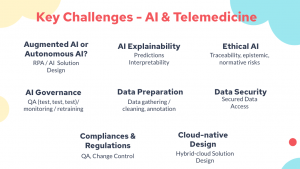
In this post, you will learn about different artificial intelligence (AI) use cases of Telemedicine / Telehealth including some of key implementation challenges pertaining to AI / machine learning. In case you are working in the field of data science / machine learning, you may want to go through some of the challenges, primarily AI related, which is thrown in Telemedicine domain due to upsurge in need of reliable Telemedicine services. What is Telemedicine? Telemedicine is the remote delivery of healthcare services, using digital communication technologies. It has the potential to improve access to healthcare, especially in remote or underserved communities. It can be used for a variety of purposes, including …
What is Explainable AI? Concepts & Examples
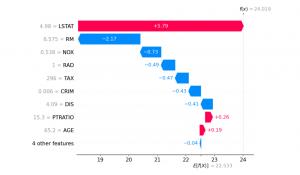
What is explainable AI (XAI)? This is a question that more people are asking, as they become aware of the potential implications of artificial intelligence. Simply put, explainable AI is the form of AI that can be understood by humans. It is AI that provides an explanation for its decisions and actions. It provides humans with the ability to explain how decisions are made by machines. This helps people trust and understand what’s happening, instead of feeling like their information is being taken advantage of or used without their permission. This is important, as many people are concerned about the increasing use of AI in our lives, especially in healthcare. …
Different Success / Evaluation Metrics for AI / ML Products

In this post, you will learn about some of the common success metrics that can be used for measuring the success of AI / ML (machine learning) / DS (data science) initiatives / projects / products. If you are one of the AI / ML stakeholders including product managers, you would want to get hold of these metrics in order to apply right metrics in right business use cases. Business leaders do want to know and maximise the return on investments (ROI) from AI / ML investments. Here is the list of success metrics for AI / DS / ML initiatives: Business value metrics / key performance indicators (KPIs): Business …
12 Weeks Free course on AI: Knowledge Representation & Reasoning (IIT Madras)

Are you interested in learning about exploring a variety of representation formalisms and the associated algorithms for reasoning in Artificial intelligence? IIT Madras is going to offer a free online course on AI: knowledge representation and reasoning. This course will help you understand the basics of knowledge representation and reasoning. You’ll learn how to solve problems using logic, how to build intelligent systems that can interpret natural language, reason using formal methods and more. The course is taught by Professor Deepak Khemani, who has over 20 years of experience teaching at IIT Madras. Prof. Khemani is a Professor at Department of Computer Science and Engineering. He’s also written several books …
NIT Warangal offers one-week online training on AI, Machine Learning

Are you interested in learning about AI and Machine Learning, or refresing your concepts? NIT Warangal offers one-week online paid training (minimal fees) on AI, Machine Learning. This program is a great opportunity for students to learn about AI & machine learning basics and advanced concepts. It is organized by the Department of Electronics and Communication Engineering & Department of R&D in association with Center of Continuing Education. It will be taught by experience professors who have years of experience in their respective fields. The course will take place between 30th November to 4th December 2021, and it is open to all Faculty/ Research Scholars/Industry professionals/ and other eligible students …
Data Science / AI Team Structure – Roles & Responsibilities
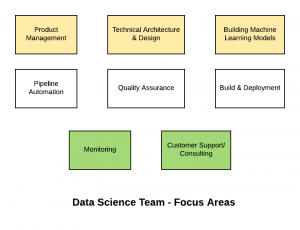
Setting up a successful artificial intelligence (AI) / data science or advanced analytics practice or center of excellence (CoE) is key to success of AI in your organization. In order to setup a successful data science COE, setting up a well-organized data science team with clearly defined roles & responsibilities is the key. Are you planning to set up the AI or data science team in your organization, and hence, looking for some ideas around data science team structure and related roles and responsibilities? In this post, you will learn about some of the following aspects related to the building data science/machine learning team. Focus areas Roles & responsibilities Data Science Team – Focus …
Sentiment Analysis & Machine Learning Techniques
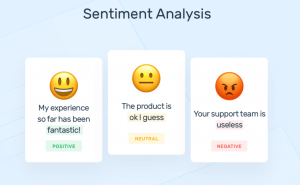
Artificial intelligence (AI) / Machine learning (ML) techniques are getting more and more popular. Many people use machine learning to analyze the sentiment of tweets, for example, to make predictions related to different business areas. In this blog post, you will learn about different machine learning / deep learning and NLP techniques which can be used for sentiment analysis. What is sentiment analysis? Sentiment analysis is about predicting the sentiment of a piece of text and then using this information to understand users’ (such as customers) opinions. . The principal objective of sentiment analysis is to classify the polarity of textual data, whether it is positive, negative, or neutral. Whether …
Clinical Trials & Predictive Analytics Use Cases
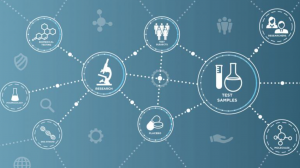
Analytics plays a big role in modeling clinical trials and predictive analytics is one such technique that has been embraced by clinical researchers. Machine learning algorithms can be applied at various stages in the drug discovery process – from early compound selection to clinical trial simulation. Data scientists have been applying machine learning algorithms to clinical trial data in order to identify predictive patterns and correlations between clinical outcomes, patient demographics, drug response phenotypes, medical history, and genetic information. Predictive analytics has the potential to enhance clinical research by helping accelerate clinical trials through predictive modeling of clinical outcome probability for better treatment decisions with reduced clinical trial costs. In …
Demand Forecasting & Machine Learning Techniques
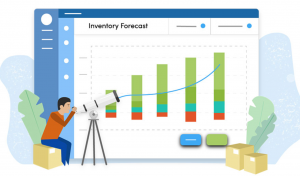
Machine learning is a technology that can be used for demand forecasting in order to make demand forecasts more accurate and reliable. In demand forecasting, machine learning techniques are used to forecast demand for a product or service. There are different types of machine learning/deep learning techniques used in demand forecastings such as neural networks, support vector machines, time series forecasting, and regression analysis. This blog post will introduce different machine learning & deep learning techniques for demand forecasting and give an overview of how they work. What is the demand forecasting process? The demand forecasting process is defined as the creation of demand forecasts, demand planning, and demand decision …
Graph Neural Networks Explained with Examples
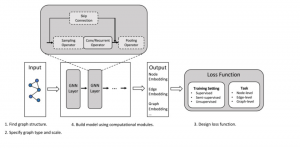
Graph neural networks (GNNs) are a relatively new area in the field of deep learning. They arose from graph theory and machine learning, where the graph is a mathematical structure that models pairwise relations between objects. Graph Neural Networks are able to learn graph structures for different data sets, which means they can generalize well to new datasets – this makes them an ideal choice for many real-world problems like social network analysis or financial risk prediction. This post will cover some of the key concepts behind graph neural networks with the help of multiple examples. What are graph neural networks (GNNs)? Graphs are data structures which are used to …
Drug Discovery & Deep Learning: A Starter Guide
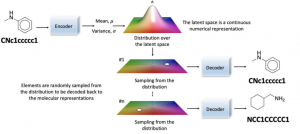
The drug discovery process is tedious, time-consuming, and expensive. A drug company has to identify the compounds that are most likely to be successful in drug development. The drug discovery process can take up to 15 years with an average cost of $1 billion for each drug candidate that passes clinical trials. With AI and deep learning models becoming more popular in recent years, scientists have been looking at ways to use these tools in the drug discovery process. This article will explore how deep learning generative models (GANs) could be used as a starting point for data scientists to get started drug discovery AI projects! What is the drug …
Supplier risk management & machine learning techniques
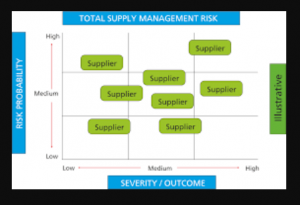
Supplier risk management (SRM) is a serious issue for procurement professionals. Suppliers can be unreliable, have poor quality products, or fail to meet specifications. In this blog post we will discuss AI / machine learning algorithms / techniques that you can use to manage supplier risk and make your procurement process more efficient. What is supplier risk management? Supplier Risk Management (SRM) also known as Supplier Risk Optimization (SRO), refers to policies and technology that enables organizations to manage risks related with suppliers. This can be done by analyzing data about past purchases from the supplier, predicting future risks related with purchases from this particular company. It’s crucial for procurement …
Online AI News from Top Global Universities – List

In this post, you will get an access to a list of web pages representing latest news related to artificial intelligence from top universities across the globe. This page will be updated from time-to-time for including new pages from different universities across the globe. These URLs will be very useful for those machine learning / data science enthusiasts who want to keep tab on current news and events in the field of artificial intelligence. MIT Stanford Stanford university – Human-centered AI (HAI) Stanford university – Center for AI in medicine and imaging Stanford AI research and ideas Harvard university JHU Malone center for Engg. in healthcare Yale university Princeton university …
Predictive vs Prescriptive Analytics Difference
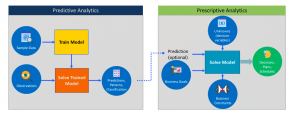
In this post, you will quickly learn about the difference between predictive analytics and prescriptive analytics. As data analytics stakeholders, one must get a good understanding of these concepts in order to decide when to apply predictive and when to make use of prescriptive analytics in analytics solutions / applications. Without further ado, let’s get straight to the diagram. In the above diagram, you could observe / learn the following: Predictive analytics: In predictive analytics, the model is trained using historical / past data based on supervised, unsupervised, reinforcement learning algorithms. Once trained, the new data / observation is input to the trained model. The output of the model is prediction in form …
NLTK – How to Read & Process Text File
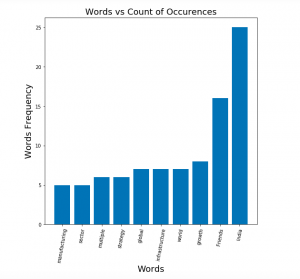
In this post, you will learn about the how to read one or more text files using NLTK and process words contained in the text file. As data scientists starting to work on NLP, the Python code sample for reading multiple text files from local storage will be very helpful. Python Code Sample for Reading Text File using NLTK Here is the Python code sample for reading one or more text files. Pay attention to some of the following aspects: Class nltk.corpus.PlaintextCorpusReader reader is used for reading the text file. The constructor takes input parameter such as corpus root and the regular expression representing the files. List of files that are read could be found using method such as fileids List …
I found it very helpful. However the differences are not too understandable for me